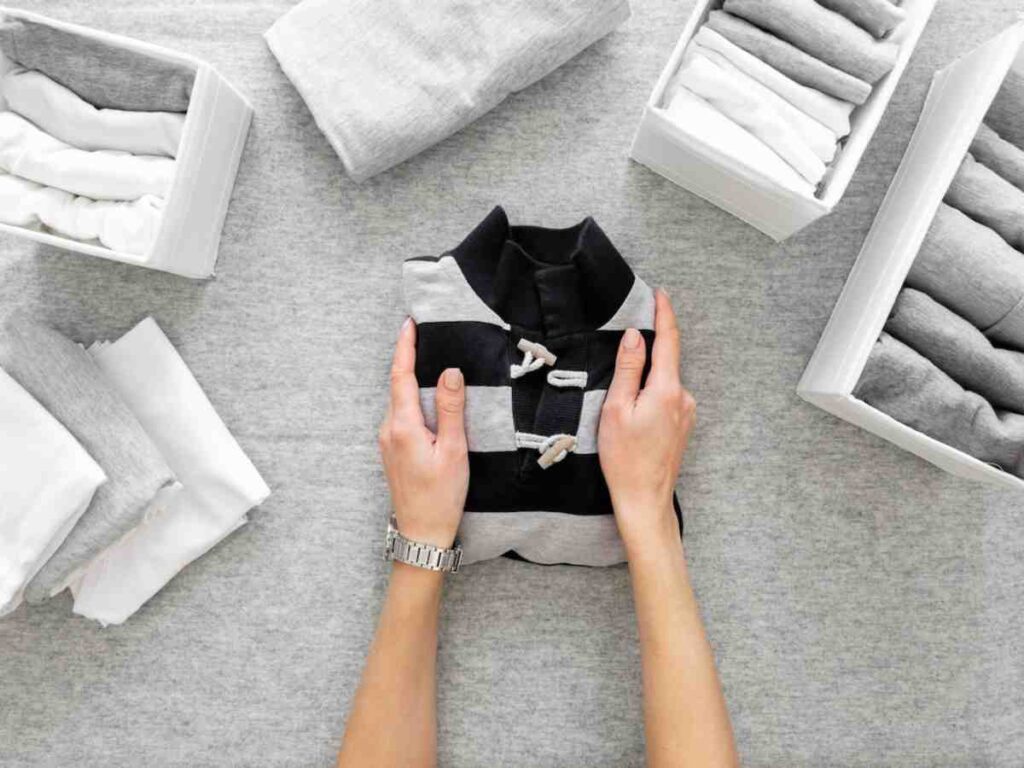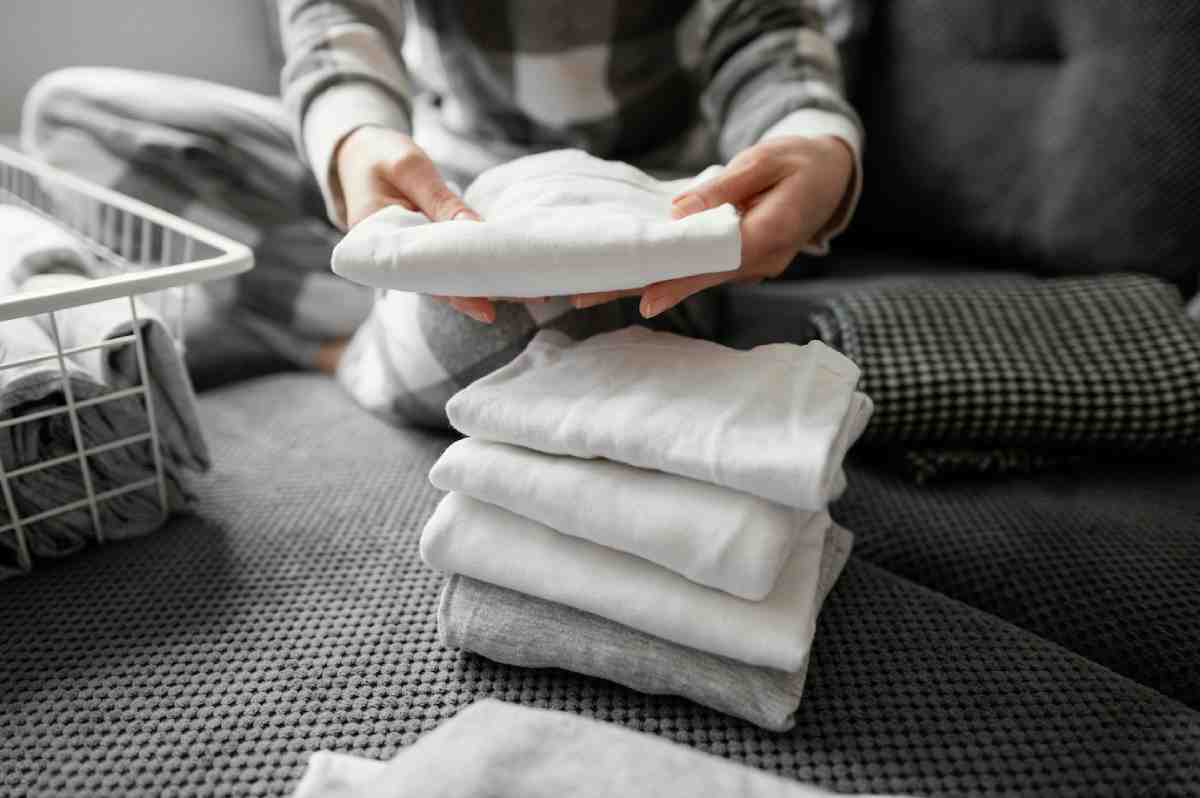The Interior Blog

How to Fold Clothes Using the KonMari Method
Imagine opening your wardrobe and seeing every item standing upright, neat and proud, greeting you with effortless clarity. That’s the magic of folding KonMari style.
The KonMari Method, made famous by Japanese organising consultant Marie Kondo, revolutionised not just tidying, but how we relate to our belongings. In this guide, you’ll learn expert techniques for vertical folding clothes to create harmony, free up space, and turn closet tidying from a dreaded chore into a daily act of mindfulness.
Whether you’re starting fresh or looking to refine your routine, this long-form, accessible guide will equip you with everything you need.
Understanding the Core: What is Folding KonMari Style?

At its heart, folding clothes using the KonMari Method is about treating your belongings with respect and making daily life easier. Rather than stacking clothes on top of each other (leading to messy piles and forgotten pieces), you fold them into compact, freestanding shapes.
The main principles of folding KonMari style:
- Clothes are folded into neat rectangles that can stand upright.
- Items are stored vertically rather than stacked horizontally.
- Every piece is visible at a glance, saving time and stress.
Research into visual clutter suggests that an organised space leads to reduced anxiety and improved mood (Princeton University Neuroscience Institute, 2011). Vertical folding directly supports this by offering orders without overwhelming them.
Important: KonMari folding isn’t just aesthetic; it’s about functionality, gratitude, and ease.
Quick Guide: Folding KonMari Style Summary
- Clear a workspace.
- Sort by clothing category.
- Use the basic vertical folding method.
- Store folded clothes upright like files.
- Use drawer dividers for structure.
- Adjust folds based on fabric and drawer size.
(Save or print this checklist for fast reference when tidying!)
Step-by-Step Guide: How to Practice Vertical Folding Clothes
Step 1: Choose a Clear Workspace
Select a clean, flat surface — a bed, table, or even the floor. Having space to spread out helps avoid feeling flustered.
Step 2: Sort by Category
Gather similar items together:
- T-shirts
- Trousers
- Jumpers
- Underwear
- Socks
Sorting by type simplifies folding and storing.
Step 3: The Basic Folding Technique
- Lay the item flat, smoothing out wrinkles.
- Fold the garment in half vertically (lengthwise).
- Fold in sleeves (for shirts and tops).
- Fold in half horizontally.
- Fold again into thirds until it stands upright like a file folder.
Pro Tip: Adjust folds depending on the fabric thickness. Heavier materials may need fewer folds to stand securely.
Step 4: Store Vertically
Place folded clothes side-by-side (not stacked) in drawers or baskets. Imagine them like books lined up on a shelf.
Secret Tip: Use shallow containers within drawers to maintain the structure and prevent slumping over time.
Step 5: Adjust to Fit Your Space
Every drawer or closet layout is different. Don’t force your clothes to fit your space — adapt storage tools, dividers, and even folding dimensions to your needs.
Important: The goal is effortless visibility and access, not perfection.
How to Fold Specific Types of Clothing
T-Shirts
- Lay flat, face down.
- Fold each side towards the centre, tucking in sleeves.
- Fold from the bottom up into thirds.
Jumpers and Hoodies
- Fold sleeves inward across the back.
- Fold horizontally in half.
- Then fold into thirds.
Pro Tip: With bulky knits, two folds may suffice to maintain a stable shape.
Jeans and Trousers

- Lay flat, fold legs together.
- Fold in half at the knee.
- Fold once or twice more into a compact bundle.
Socks
- Lay socks on top of each other.
- Fold in thirds (don’t ball them up).
Secret Tip: Avoid stretching sock cuffs; it shortens their lifespan.
Underwear
- For briefs: Fold sides inward, then fold bottom up into a small square.
- For bras: Stack cups together neatly; avoid crushing padding.
Scarves
- Fold lengthwise.
- Roll gently or fold into compact rectangles, depending on the material.
Best Practices for Vertical Folding Clothes
Use Consistent Folding Motions
Repetition builds speed and muscle memory over time. Start slow, then naturally become quicker.
Refresh Your Drawers Regularly
Spend a few minutes each month reshuffling or tidying your drawers. Prevents slumping and keeps the “joy spark” alive.
Involve the Whole Household
Teach children or flatmates the KonMari method for their own items. Creates shared respect for personal spaces.
Important: Everyone benefits from a calmer, clutter-free environment.
Best Folding Accessories for Closet Tidying
- Drawer Dividers: Customisable, adjustable organisers keep rows upright.
- Small Baskets: Excellent for socks, underwear, and accessories.
- Labelled Sections: Especially helpful for shared spaces or seasonal rotations.
Secret Tip: Fabric baskets are flexible and forgiving, ideal for changing needs.
Real-World Example: James’ Closet Tidying Journey
James, a London-based software engineer, once dreaded opening his cluttered wardrobe each morning.
“It felt like everything was collapsing on me,” he says. After learning vertical folding clothes using the KonMari method, James transformed his space in a weekend.
Now?
- He finds outfits quickly.
- He launders and re-folds with minimal effort.
- His mornings start with clarity rather than chaos.
“It sounds simple,” he admits, “but it changed how I start every day.”
FAQs About Folding KonMari Style
Is vertical folding practical for small wardrobes?
Absolutely. In fact, it is ideal for tight spaces. You maximise drawer and shelf space while gaining instant visibility.
How long does folding KonMari style take?
Initially, a drawer might take 20–30 minutes. With practice, it can take under 10 minutes. It’s about building a ritual, not rushing.
Should I iron clothes before folding?
Only if desired. The folding method itself minimises creasing by reducing pressure points compared to traditional stacking.
What if clothes keep falling over?
Check fold thickness — denser folds stand better. Using drawer dividers also helps maintain structure.
Conclusion: Make Closet Tidying a Joyful Ritual

Folding clothes the KonMari way isn’t just about tidiness. It’s a daily act of gratitude, respect, and self-care. By embracing folding KonMari, practising vertical folding clothes, and viewing closet tidying as a lifestyle rather than a chore, you create not just an organised space, but a more peaceful, purposeful life.
Are you ready to turn your wardrobe into a source of everyday calm and clarity? Begin today, one fold at a time.
Have you tried folding KonMari style? Share your experiences, wins, or questions in the comments below — let’s inspire each other to spark joy through simplicity!









